Turn everyday touchpoints into micro-funnels
Create scannable, trackable QR funnels for cafés, events, packaging and shorts — then measure scans → CTR → EPC.Affiliate Marketing with QR Codes: The Field Guide
QR codes and affiliate marketing are a perfect match: fast to scan, easy to attribute, and powerful in offline and social contexts. In this guide, we’ll show how to turn everyday touchpoints—cafés, events, unboxing moments, street posters, and short videos—into decentralized, high-trust micro-funnels. You’ll get practical playbooks, conversion benchmarks, and an optimization routine you can run weekly. Tools are simple (any solid QR generator + basic analytics). A visual orchestrator like VISU can help with variant cloning and tracking at scale, but the hero is your strategy—not the tool.Why QR Codes Win in 2025
QR adoption surged and stuck. Consumers know the gesture: raise phone, scan, act. For affiliates, that micro-commitment is gold—it compresses the gap between curiosity and click. The upside:- Immediate intent: Scans qualify attention. If they scanned, they care.
- Ubiquity: Works across print, packaging, events, live streams, short-form video, and even street posters.
- Attribution made simple: Unique codes per placement + UTMs = channel clarity.
- Decentralized growth: Dozens of small QR funnels often beat one giant generic funnel.
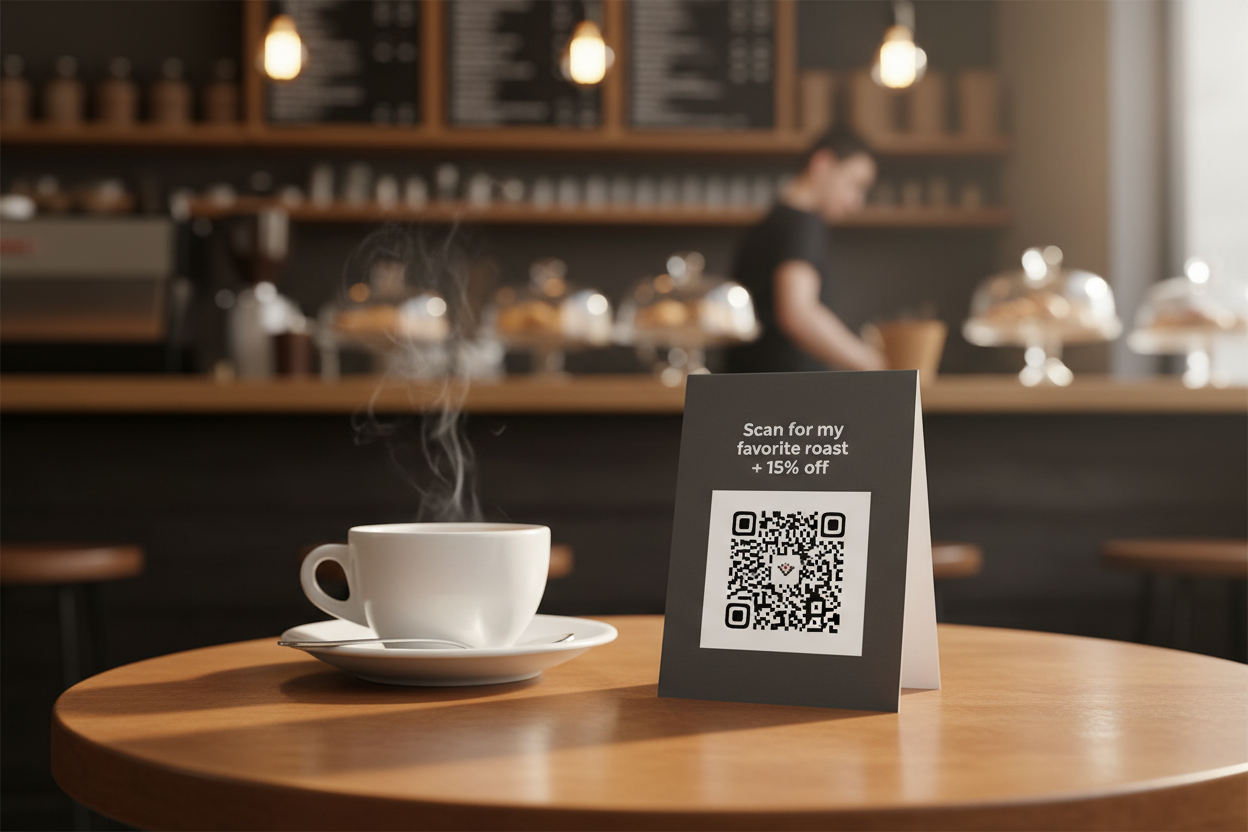
Show Me the Money: Real-World Examples
- Café collab: Creator places a table-tent QR “Scan for my favorite roast + 15% off.” Results: 2–5% of seated guests scan, 25–40% click-through to the roaster, EPC $0.20–$0.60. Net: $150–$600/mo per busy café with minimal upkeep.
- Event deck giveaway: Speaker shows “Grab my deck + toolkit” QR; 10–30% of room scans live; tool affiliates with honest pros/cons convert ~3–8% clicks depending on trial friction.
- Unboxing insert: Card inside packaging with “How I set this up in 10 minutes” and add-ons. 8–18% scan rates; add-on CTR 15–25%; top SKUs yield 5–12% attachment rate.
- Street poster: “Free city guide + local deals.” Scans cluster by day/time. Advertisers pay for placements; affiliates monetize guidance and partner offers.
- Shorts overlay: “Scan to copy my 20-min HIIT plan + gear list.” At 100k views, expect 0.2–0.8% scans, 20–35% CTR to store, EPC varies ($0.10–$0.70).
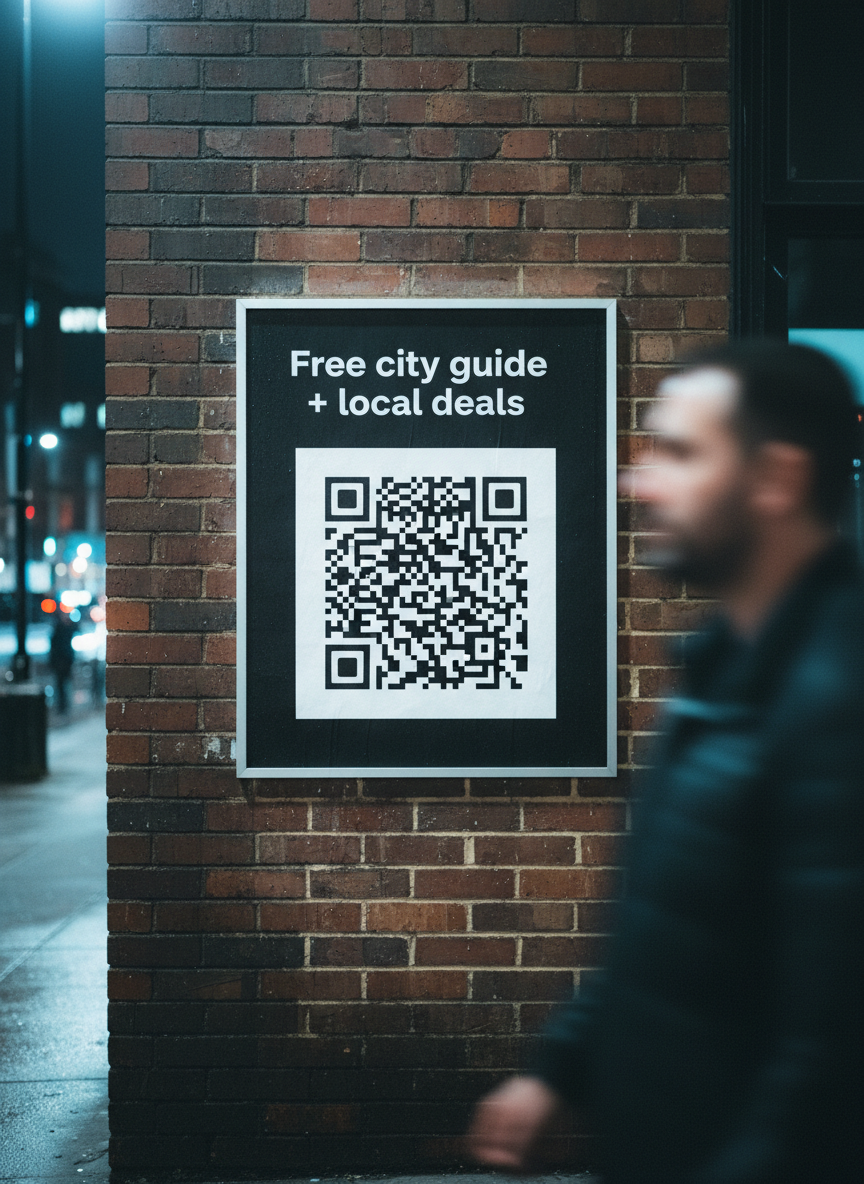
Strategy Playbook: 6 Proven Funnels
1) Café Table-Tent → Roaster Subscription
Frame: “Scan for my favorite roast + 15% off.” Landing: 45-second tasting note video + honest flavor notes + affiliate to subscription (or first order). Bonus: brew guide PDF.- KPIs: Scan-through per 100 seated, landing CTR, EPC, weekend vs. weekday spread.
- Benchmarks: 2–5% scan rate; 25–40% CTR; EPC $0.20–$0.60.
- Tip: Place tent near cup, not sugar station. Specific headline wins.
2) Unboxing Insert → Add-on Attachment
Card: “How I set this up in 10 minutes.” Landing: setup steps, pitfalls, add-ons that solve real problems (cables, mounts, filters).- KPIs: Scan rate per 1,000 shipments, add-on CTR, attachment rate.
- Benchmarks: 8–18% scan; 15–25% CTR; 5–12% attachment on top add-on.
- Tip: Show 3 add-ons max. One CTA primary.
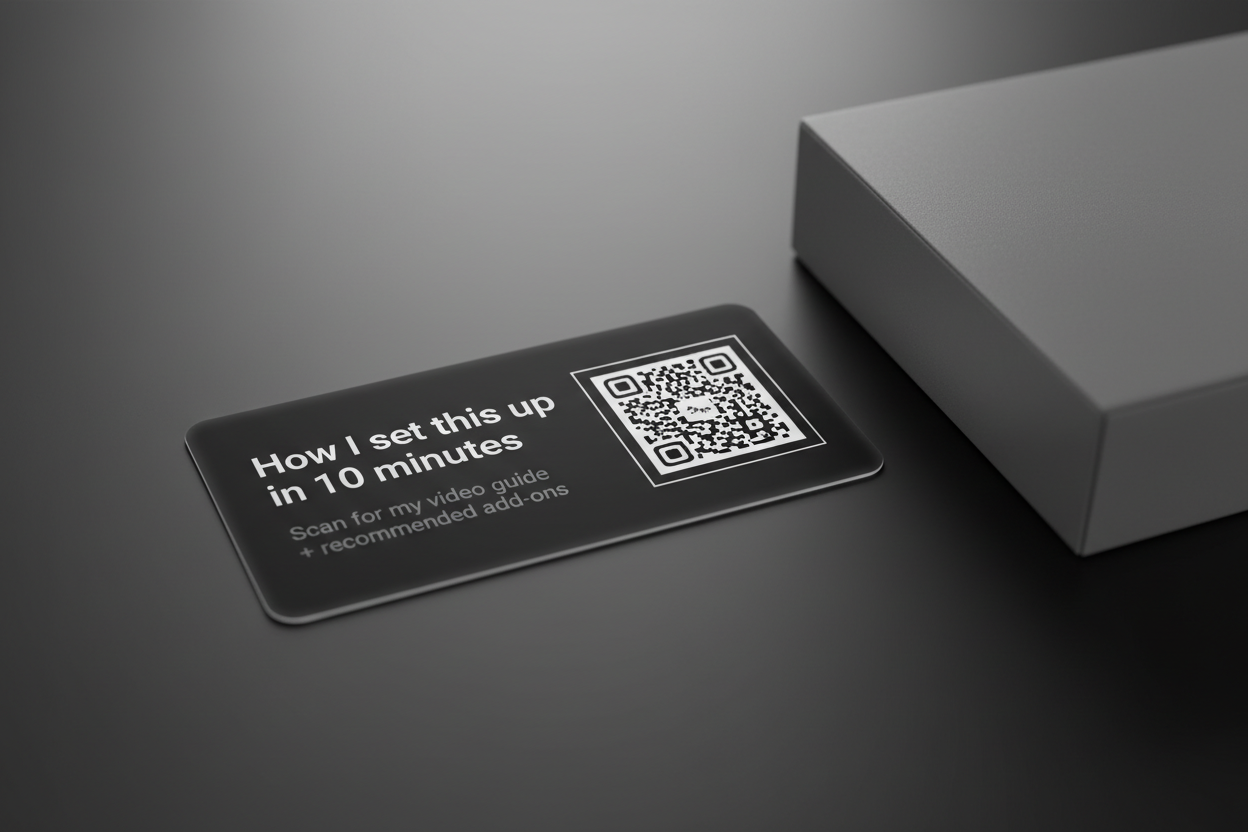
3) Event Slide → Deck + Toolkit
Slide QR: “Grab my deck + toolkit.” Landing: deck, checklist, and 2–3 tools with transparent pros/cons and affiliate links.- KPIs: Scans per attendee, toolkit CTR, post-event EPC.
- Benchmarks: 10–30% scan in-room; 20–35% CTR; EPC depends on trials.
- Tip: Show slide twice (start and end). Keep QR bottom-right.
4) Street Poster → Guide + Partner Offers
Poster: “Free city guide + local deals.” Landing: curated map + partner offers + timely content (e.g., weekend events).- KPIs: Scans per daypart, partner CTR, revenue per 1,000 passerby (RPM).
- Benchmarks: Heavily location-driven; test headline variants weekly.
- Tip: Eye-level placement; good lighting; high contrast QR with quiet zone.
5) Video Shorts → Routine + Gear List
Overlay bottom-right: “Scan to copy my 20-min HIIT plan + gear list.” Landing: routine PDF + 2–3 gear picks (good, better, best).- KPIs: Scans per 10k views, plan downloads, gear CTR, EPC.
- Benchmarks: 0.2–0.8% scans; 20–35% CTR; modest EPC but scales with views.
- Tip: Keep overlay on-screen 5+ seconds; re-appear near video end.
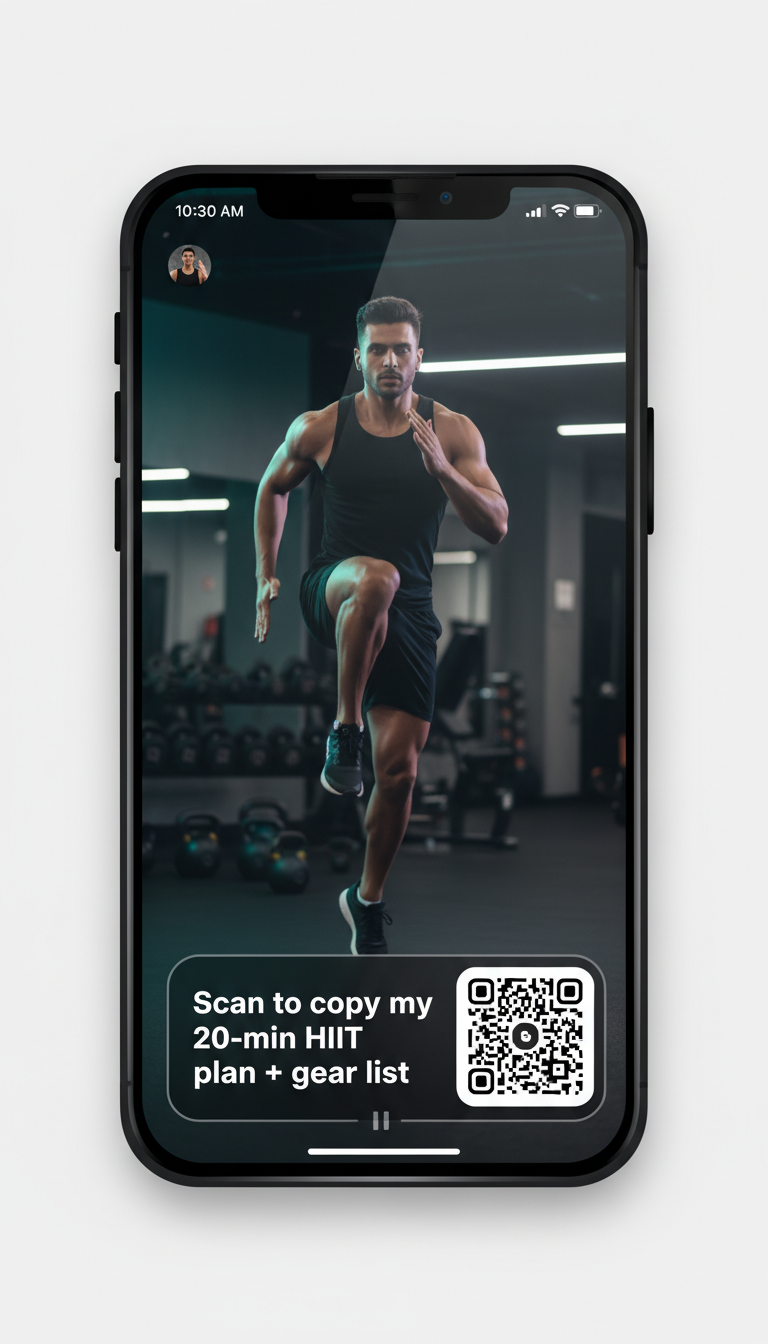
6) B2B Collateral → Case Study + Signup
QR on one-pager: “See how ACME cut costs 22% in 90 days.” Landing: short case, metrics, CTA to trial or consultation with affiliate terms.- KPIs: Scans per booth visit, case CTR, call bookings, EPC proxy.
- Benchmarks: Lower volume, high value; attribute by
qr_id. - Tip: Make the proof section visual (before/after chart).
Clone variants, track EPC, scale winners
Keep UTMs andqr_id consistent, compare funnels weekly, and roll forward the top performer.
Technical Setup: Create, Track, Optimize
The technical foundation is simple but non-negotiable. Every QR code needs a unique identifier and proper tracking parameters to measure performance accurately.- Unique QR per placement: Name like
YT_Overlay_Sept,Cafe_Table_B,Event_Poster_Aand append asqr_idparam. - UTM standards:
utm_source=channel,utm_medium=qr,utm_campaign=product_variant. - Event ladder: scan → land → affiliate click → purchase (or EPC proxy from partner dashboards).
- Decision cadence: 200+ scans per variant before calls; then clone winners, prune losers.
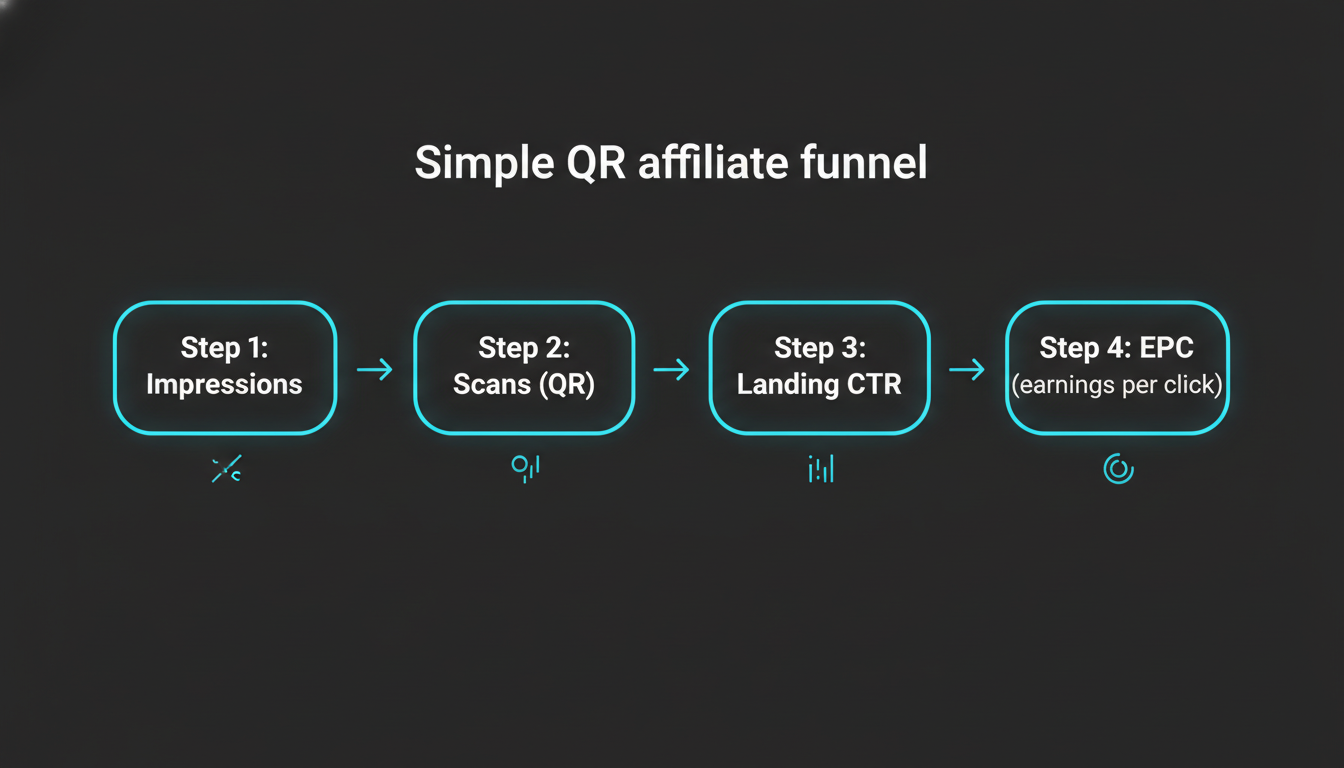
Conversion Boosters: Copy, Design, Placement
Small tweaks compound. Here’s what moves the needle consistently across contexts:- Headline formula: “Scan to [outcome] + [incentive].” Specific beats vague.
- One primary CTA: Reduce choice paralysis; extras go secondary.
- Proof first: Size your proof block above the offer: mini case, 2–3 screenshots, or short video.
- Speed matters: Compressed media; lightweight layout; short scroll.
- QR quality: High contrast, generous quiet zone, test under different lights and distances.
Scaling From $100 to $10k/month
- Find a single winner: One product + one avatar + one promise that delivers.
- Horizontal scale: More placements (cafés, gyms, meetups, mailers), more channels (shorts, stories, posters).
- Angle variants: Beginner vs. pro; budget vs. premium; quick-start vs. deep-dive.
- Bonus engine: Templates, presets, and checklists tied to the product’s adoption curve.
- Systematize: Weekly metrics review; monthly pruning and cloning; quarterly repositioning.
Tooling: Generators, Links, Analytics (VISU optional)
You don’t need a complex stack to start. Here’s the minimal viable toolkit:- QR generators: Any reliable generator that supports error correction and exports vector or high-resolution images.
- Link/UTM management: Use your analytics platform’s Campaign URL builder; keep naming consistent.
- Analytics: Track scans and clicks; if partner EPC is available, use it as a conversion proxy.
- Optional—VISU: A visual command center to clone QR+landing variants, keep UTM/qr_id consistent, and centralize experiments. Helpful when you manage many placements or collaborators, but not required to start.
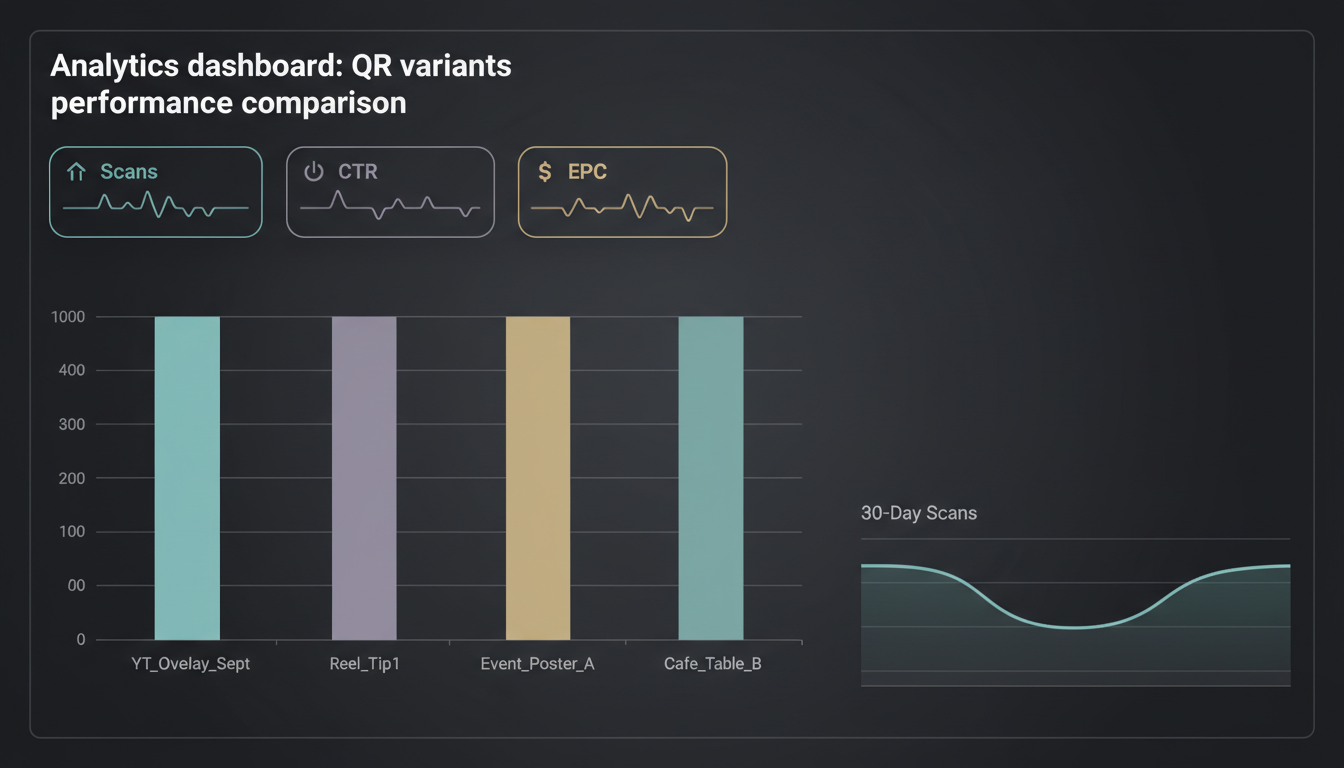
Common Pitfalls (and Fast Fixes)
Most failures are predictable and fixable. Watch for these:- Vague promise → Rewrite as a specific outcome with a tangible incentive.
- Slow page → Compress media; cut non-essentials; lazy-load embeds.
- Too many choices → One primary CTA; keep alternatives below the fold.
- No tracking discipline → Standardize UTMs and
qr_idfrom day one. - No disclosure → Add a clear, friendly affiliate disclosure to build trust.
30-Min Launch Checklist + Weekly Ops
Launch in 30 minutes:- Pick one product, one audience, one promise.
- Create 3 QR variants with different headlines and frames.
- Build a micro-landing: story → proof → offer → CTA.
- Add
utm_source,utm_medium=qr,utm_campaign, and aqr_id. - Deploy in 2–3 placements (e.g., video overlay, table tent, insert card).
- Review scans, CTR, EPC by variant.
- Kill worst performer; clone the winner; change one element (headline, visual, incentive).
- Log changes so learnings compound.
Resources and Benchmarks
- NerdWallet: What is Affiliate Marketing?
- Google Analytics: Campaign URL Builder (UTMs)
- FTC: Advertising and Marketing Basics (Disclosures)
Launch a QR affiliate pilot this week
Start with one winning angle, three variants, and tight UTMs. Measure EPC and scale what works.FAQ: QR Codes for Affiliate Marketing
How do I attribute sales from a QR scan?
Use a unique
qr_id per placement plus UTMs. Compare scans → clicks → conversions in analytics/affiliate dashboards.Do I need dynamic QR codes?
They’re recommended for campaigns: you can change destinations, A/B test landings, and keep attribution consistent without reprinting.
What scan rates should I expect?
Context-driven. Cafés 2–5% of seated guests; event slides 10–30% in-room; shorts 0.2–0.8% of views. Optimize headline, placement, and contrast.
What’s the best CTA copy on print?
Use the formula: “Scan to [outcome] + [incentive]” (e.g., “Scan to get my HIIT plan + gear list”). Specific beats vague.
Any compliance concerns?
Add a clear affiliate disclosure on the landing. Follow FTC guidelines and platform policies for paid endorsements.

